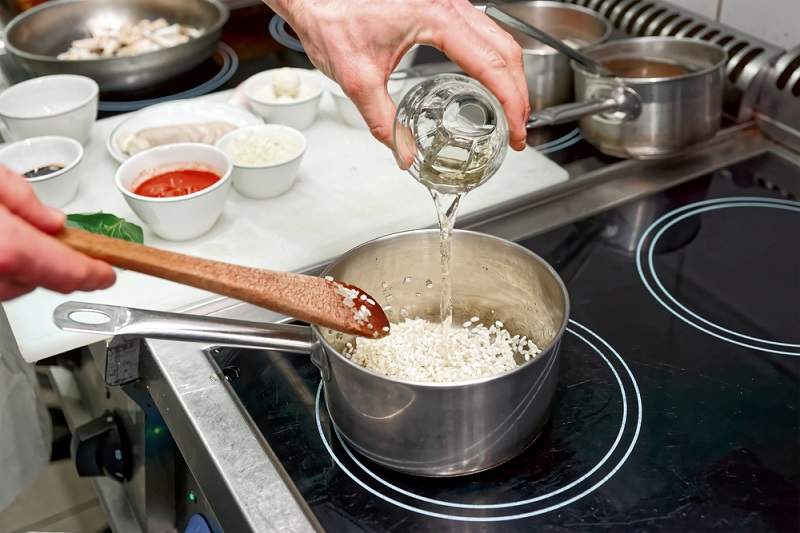If you have cooked up a delicious feast of risotto but have some left over, there’s no need to throw it in the bin or add it to your compost heap.
You can keep risotto for up to three days in the fridge, but there are a few factors that can reduce or lengthen how long the risotto will stay fresh and safe enough to eat.
How to Store Risotto in the Fridge
Risotto lasts longer when you store it in a container that is airtight. Once the risotto has cooled a little, transfer the leftovers to a Ziplock-style bag or a Tupperware container.
You could also use a regular dinner bowl or dish and cover it with clingfilm if nothing else is available.
Push as much air out of the bag as you can before you seal it up, or place the lid on the container. Then, place the risotto in the fridge. If you are likely to forget, add the date to the bag.
How Long is Risotto Safe to Eat When It Has Been in the Fridge?
You can keep risotto in the fridge for up to three days when it has been stored in an airtight container.
It is recommended that you reheat and eat leftover risotto within one day.
Risotto that contains meat products, such as chicken, beef, pork, turkey, etc., won’t last quite as long.
You should eat leftover risotto that contains meat within one day, provided you have stored the leftovers in the fridge in an airtight container.
How to Heat Up Refrigerated Leftover Risotto
Because of the high starch content, risotto that has been cooled and/or refrigerated will turn quite thick and gloopy.
The dish can be ‘saved’ and made more fluid during the re-heating process by adding more fluids to the mix.
In the case of risotto specifically, you can use water, stock, or broth to add more fluid. It is best to use the same flavour (such as chicken broth) to re-heat the dish as you did to cook it.
Risotto made with beef broth might taste a little odd if you add chicken broth to the mixture during reheating.
For every 250 ml (approx.) of risotto you have made (or for every 1 cup, if you’re American), you should add 60-70 ml of broth (¼ of a cup) to the dish as you’re reheating it.
If the risotto is still quite thick, simply add and stir in more of the broth.
If you accidentally add too much broth, let the risotto simmer for a minute or two so that the fluid boils and evaporates.

How Quickly After Cooking Should I Refrigerate Risotto?
After cooking and/or serving, you should leave risotto (or just rice) out at room temperature for a maximum of one hour.
The leftover risotto should be allowed to cool a little, before then adding to an airtight container to store in the fridge.
Why Shouldn’t You Leave Risotto at Room Temperature?
If you leave rice sitting at room temperature, after it has been cooked, for more than an hour or two, bacteria spores called Bacillus cereus can thrive and grow from spore to actual bacteria.
When ingested, the bacteria cause an upset stomach, also known as food poisoning.
The warmer the temperature, the faster the bacteria will form, and the higher the chances of your delicious risotto dinner making you quite unwell.
Storing leftover risotto in the fridge at a cooler temperature and in an airtight container will massively slow down the formulation of Bacillus cereus bacteria.
The reheating/re-cooking process does not kill Bacillus cereus spores or its bacteria. Re-cooking rice will not make it safer to eat.
Food poisoning symptoms usually arise within one to five hours of eating the afflicted dish, and lasts for between 24 and 48 hours.
Symptoms include diarrhoea, vomiting, abdominal pain and cramps, shaking, a fever, sweating, loss of appetite, and more. Dehydration can be a very serious problem with food poisoning.

Kim is a writer with more than a decade of experience, and a food enthusiast. When she’s not spending her time writing about her favourite dishes, you can find her in the cake aisle of her local supermarket, or making a mess in the kitchen.






